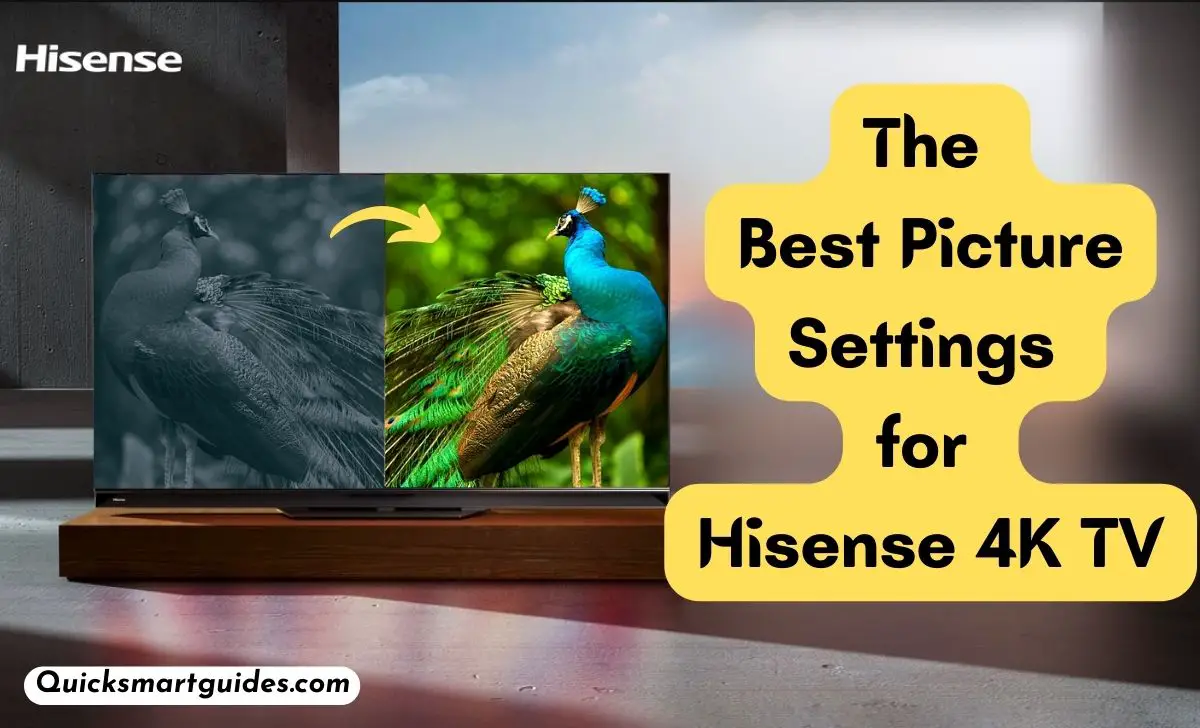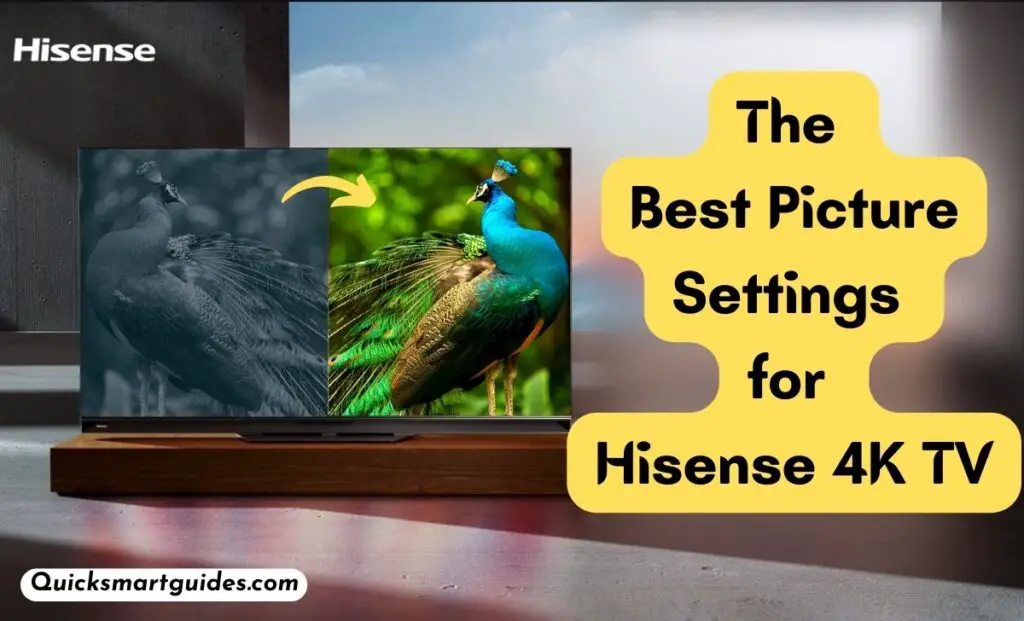Hisense is one of the famous TV brands offering the best in class smart TVs at an affordable price range. Seemingly, Hisense has a smart TV lineup from LCD to 4K. Indeed, the 4K TVs are known for their Hi-Res display panel with backlight technology.
Meanwhile, the respective TVs are calibrated with some default preset modes to provide a better streaming experience. However, those preset modes won’t be optimal for every type of content.
In such cases, changing the picture settings according to the respective content can provide the best output. Concerning that, the following article will provide you with the best picture settings for your Hisense 4K TV.
What are Picture Settings?
In short, Picture Settings mean the Brightness, Contrast, Backlight, Color Tone, Sharpness, Dolby Vision, and HDR on a smart TV. Indeed, these settings play a major role in your viewing experience.
Meanwhile, the uneven level of these picture settings can ultimately ruin your streaming. In simple words, some content requires more brightness and some content may require ultra-dimming at times. Moreover, the picture settings are like the optimal volume level of your favorite song.
So, it is important to know these settings and their calibration levels for a better viewing experience. With that being said, the following section will mention the best picture settings for your Hisense 4K TV.
Also Read: How to Change Brightness on Hisense Smart TV?
General Settings
Picture Mode
Indeed, changing the picture mode is one of the typical settings to make your TV look better. Seemingly, there are various types of default picture modes like Natural or Standard, Vivid, Cinema, Sports, Game, and HDR. Meanwhile, selecting any one of these settings will apply different preset Brightness, Contrast, and Color Tone levels on your TV.
However, we would recommend you choose ‘Cinema Mode’ which will have an even calibration level that suits all types of content. With that being chosen, go to advanced settings and adjust the Backlight and Brightness to ’50’, Contrast to ’90’, Color tone to ’45’, and Sharpness to ‘0’.
HDR Settings
HDR is a default option on 4K TVs. In simple words, HDR stands for High Dynamic Range. Seemingly, HDR is the range of details present in an image or video. For example, the human eye has a high dynamic range and that is why we can see details in both light and dark. Moreover, the respective feature is enabled by default on most TVs. We would suggest you check whether the HDR option is enabled before watching a movie or TV show.
Dolby Vision
Dolby Vision is one of the most expected premium features on most smart TVs. Seemingly, the respective feature enhances your image or video content and outputs the most natural color tone as seen with our naked eyes. Indeed, there are various Dolby Vision-certified movies and TV shows which are available on popular OTT platforms. We recommend you keep this setting as it is and don’t apply any picture settings.
Viewing Angle
Viewing Angle is an important feature if you are watching a movie either alone or with your family and friends. The reason is that we may watch TV from different angles. So, the viewing angle of a TV is very important to get distraction-free streaming from any angle.
Meanwhile, the Viewing Angle feature is related to the display panel. However, you can find the Viewing Angle as a feature on the Picture Settings menu. If your TV supports the respective feature, ensure that you enable it for a better streaming experience.
Also Read: How to Change Language on Hisense TV?
Motion Settings
Motion Smoothing, TrueMotion, and Motion Interpolation
True Motion or Motion Smoothing is a feature on most smart TVs that has a significant impact while watching fast-paced content. For example, you may be watching a sports video or a car race event. The problem with these contents is that the subject and object move fast before we understand what’s going on on the screen.
However, you can make the subject and object move at the correct frame rate by enabling the Motion Smoothing feature. But the major issue is that this option won’t be ideal for movie watching. So, ensure that you disable the TrueMotion and Motion Interpolation features before watching your favorite movies or TV shows.
Gaming Settings
You can enable or disable the Game Mode from the basic picture settings menu. Meanwhile, this game mode option serves the best while playing games on your Hisense 4K TV. Seemingly, the gaming TVs also support two extra features namely ‘Auto Low Latency Mode and Variable Refresh Rate’. Indeed, these features will help you with less time delay and lag-free gaming. Our recommendation is to enable these settings if you are planning for gaming on your Hisense 4K TV.
Also Read: How to Add Apps on Hisense Smart TV?
Best Hisense 4K TVs
If you are planning to buy or switch to a Hisense 4K TV, the below given are some of the best picks that you can consider choosing.
- Hisense U9DG
- Hisense U8H
- Hisense U7H
- Hisense U6H
- Hisense A6H
End Note
Hereby, we conclude the article about the best picture settings for Hisense 4K TV. Indeed, Hisense has some of the best smart TVs which are equally competitive with Samsung and Sony TVs. Make use of the above article to set up optimal picture settings on your respective TV and enjoy watching your favorites.
Frequently Asked Questions
What are the best picture settings for a Hisense 4K TV?
- Picture Mode – Movie or Cinema
- Brightness – 50%
- Backlight – Low
- Contrast – 100%
- Sharpness – 0%
- Color – 50%
- Temperature or Tone – Warm
Does Hisense TV have good picture quality?
The Overall Picture Quality of the Hisense TV is good as it contains a U8K Series Set and a 55-inch Display. Additionally, it has the best HDR Performance with proper Brightness modes.
Elango is a Senior Content Writer for ‘Quick Smart Guides’, writing about the latest in tech with a particular focus on daily use devices and streaming services.

